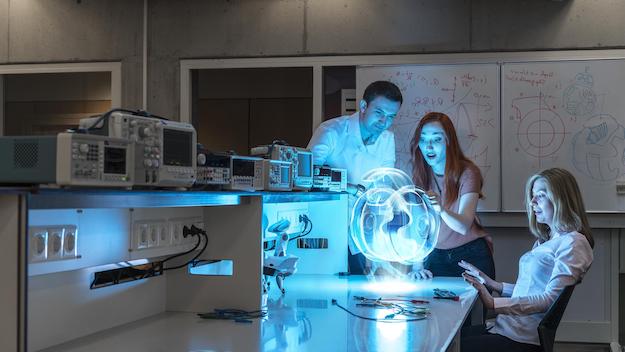Stand in front of a mirror – and what do you see? Your eyes: the perfect sensor for seeing. Your nose: the perfect sensor for smelling. Your ears: the perfect sensor for hearing.
Extend that out to the non-biological world, and we have created some brilliant sensors of our own that allow us to wield the power of sensory information in the technological and industrial world. The ultrasonic sensor, as just one example, helps robots interpret and reprocess basic inputs – in this case, ultra-high frequency sound waves emitted by a transmitter and reflected back to a receiver – in order to get a lot of work done. With a simple and ingenious sensor like this, robots navigate the world, open and close gates, control fluid levels, automatically measure real-time distance – and the list goes on.
In the industrial world, given the range and scope of an almost never-ending list of different sensor types, we can take all of those physical inputs – light, motion, heat, pressure and so on – and do some astonishingly useful, productive and profitable things with their help.
And so here we are, at the present day, as we consider the exciting next step for the world of sensors, and the even more exciting future of what the world of business and industry will be able to do with them:
1. Miniaturisation
You can’t have missed the obvious trend that as technology evolves, it gets more powerful – and smaller and smaller. In the world of sensors, this is exciting news indeed, as it means more and more sensors can be doing their thing in a single application. Smaller and smaller sensors proliferating with ever more impressive performance and often with lower power requirements means the usefulness doesn’t just get steadily better – it becomes exponential.
2. Digitisation
Our modern world is becoming ever more digitised – and that shift is leading us down a new road to what is called intelligent or smart sensors. What this means is that sensors are not only capturing basic input data, they’re also doing the interpretation of those inputs at pretty much the same time and within the same modality. The conclusion of this proliferation of digitisation combined with the ‘internet of things‘ (IoT) and increasing connectivity is obvious: in terms of potential applications, the sky really is the limit.
3. Sensor fusion
As touched upon earlier, as the world of sensors merges with digitisation, miniaturisation and our increasingly connected universe, the next step is just as obvious: the seamless integration of multi-sensor systems. Sensor fusion is what describes the phenomenon of integrating a multitude of sensors into a single, manageable package. For instance, just as a brainstorming session works, five sensors working together for a single purpose is more powerful than if those five sensors were doing their thing individually – because the strengths of the individual sensors are being balanced out and integrated.
The future of business is the future of sensors
As you can tell, these three futuristic trends of the sensor world overlap and intermingle – and the big beneficiary is business and industry. More data, more flexibility, better integration and greater performance means better and smarter decisions, more impressive services and products, and higher productivity, efficiency, innovation – and profits.

